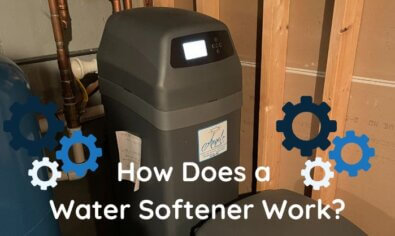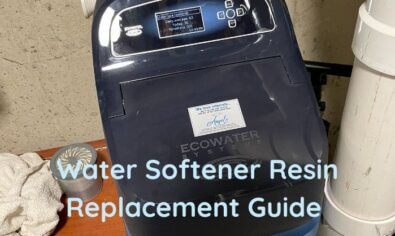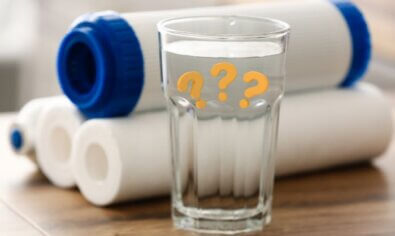What Do I Need to Know About Well Water?
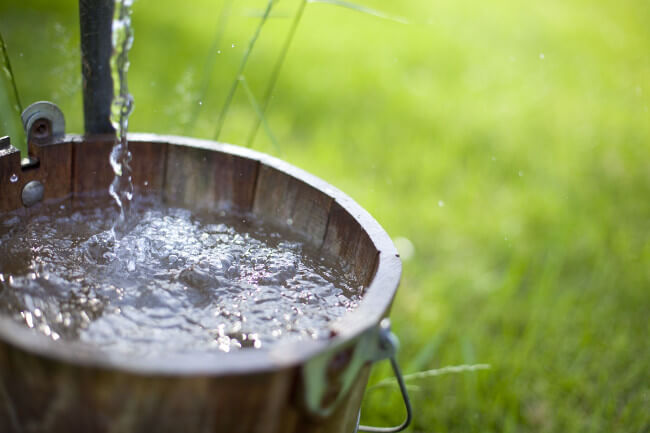
Learn How to Make Your Well Water Clean and Pleasant

If you’re like many residents throughout Chicago and the surrounding region, you may draw your drinking water from a well. This means you’re totally outside of your city’s water infrastructure. While that can be good for avoiding certain types of pollutants like mercury and VOCs which often enter local water supplies, it also means you’re drinking well water that hasn’t gone through the extensive water treatment and testing processes required for municipal water. How can you ensure your well water is safe, clean, and pleasant to use?
Let’s go over the risks associated with well water in Chicago and nearby suburbs, the precautions you should take, and the water treatment solutions available for improving your water quality.
What Contaminants Can Get into Well Water?
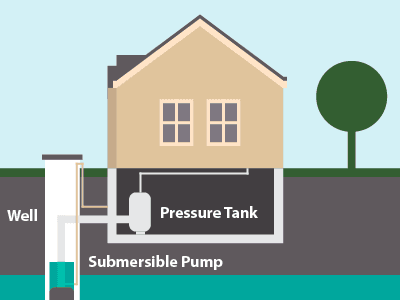
Municipal water has many layers of bureaucratic oversight trying to maintain the water quality. The Illinois EPA oversees community water systems, and the IDPH oversees non-community water systems. They handle the construction, inspection, testing, and management of those water supplies. However, with well water, the IDPH issues permits and conducts inspections of new well constructions, but after that you’re on your own.
Unfortunately, a lot of well owners take “out of sight, out of mind” and “if it isn’t broke don’t fix it” approaches to testing water quality. They wait until something is visibly wrong to respond. The problem with that is that well water, just like municipal water, is susceptible to many dangerous contaminants that can’t be seen, tasted, or smelled.
That includes toxic chemicals, microorganisms, and elements.
Volatile organic compounds, or VOCs, are one example of hard-to-detect chemical contaminants that can get into well water. This is a family of 21 chemical byproducts of fuels and solvents. Up until the 80s, repair shops, metal parts fabrication facilities, gas stations, dry cleaners, print shops, and other businesses would dispose of solvents by just dumping them on the ground, and the VOCs from back then are still around. Other chemical pollutants such as nitrates, herbicides, pesticides, and others can come from nearby farm fields, feedlots, septic systems, and manure storage areas.
Coliform bacteria is an example of microorganisms that threaten well water. These bacteria are usually found in the digestive tracts of humans and animals, but can appear in your well if surface water or sewage get into the groundwater. They can also indicate the presence of other more harmful microorganisms, such as the parasites that cause giardiasis.
Finally, toxic elements like lead, arsenic, and radium can get into groundwater through industrial runoff or mineral erosion.
This is why it’s so important to test and maintain your well so you know exactly what’s in the water your family is using.
What Precautions Will Help Keep My Well Water Safe to Drink?
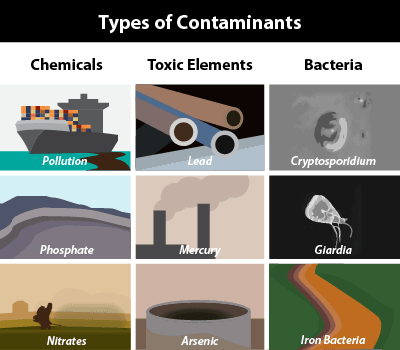
Because you draw your water directly from a well, you bypass a lot of the processes and regulations that protect people who drink city water. Their water is regularly tested and monitored for contaminants, disinfected with chlorine, and treated to maintain standards for clarity, taste, and other factors. You get none of that. Instead, well owners are fully responsible for testing and treating their own water.
Here’s a checklist of basic precautions you should take if you use well water:
- Get professional water testing done at least once a year.
- Have a certified well contractor inspect your well system annually.
- Have a certified septic system operator inspect your septic system regularly.
- Try to be conservative with how much water you use.
- Be careful with chemicals at home—what goes down the drain today, may be in your water supply tomorrow.
- Implement a water treatment system to provide your family with safer water.
- Consider the pros and cons of shock chlorination for your well.
Click here for more details on these recommendations and what you should do as a well owner.
What’s Well Water Chlorination and How Should I Use It?
In order to comply with EPA standards about the permissible concentrations of toxins, municipal water treatment facilities use various methods to treat the water before piping it into people’s homes. One of the most important processes they use is chlorination, where they disinfect the water with chlorine.
Chlorine kills microorganisms that cause diseases like cholera, dysentery, typhoid fever, and gastroenteritis. Scientists think it accomplishes this by disrupting those organisms’ cell membranes and terminating cell functions. Since Americans started chlorinating water in 1908, it’s grown to be the most common way that cities disinfect water for public consumption. However, as a well water user, your water doesn’t go through chlorination, and you may want to think about changing that.
Concerned About Your Well Water? Get a Free Test Today!
Well water can carry contaminants like bacteria, chemicals, and heavy metals. Get a free water test now to ensure your water is clean and safe for your family.
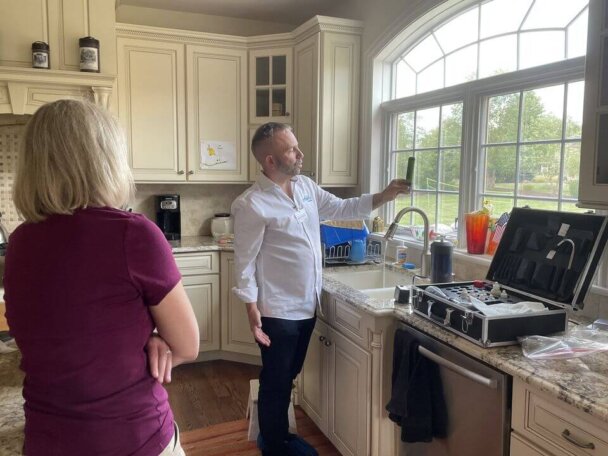
Well water chlorination is a complicated operation, though. Municipal supplies use one of several forms of chlorine, including solid calcium hypochlorite, a sodium hypochlorite solution, or even a compressed elemental gas. You also have to choose the right type of chlorine for the job. You also have to figure out how much of it to use and how to administer it, based on the well’s depth and dimensions, water temperature, pH, and more.
It’s tricky because you have to do it in such a way that the well has enough contact with the chlorine for long enough to kill the bacteria you want to kill, but not so much that it causes other problems.
Shock Chlorination

This is especially difficult when you’re considering shock chlorination. Shock chlorination is when you use a lot of chlorine (usually in the form of bleach) all at once to disinfect a well water system that’s become contaminated with bacteria.
A typical shock chlorination operation includes the following steps:
- Mix 2 quarts of liquid household bleach (with 5.25% chlorine and no scents or other cleaners added) with 10 gallons of water and pour it into the well.
- Use a garden hose to wash down the inside of your well.
- Turn on each faucet in your home and let it run until the water smells strongly of chlorine. Then, turn it off and do the next one. Don’t forget hydrants and outdoor faucets.
- Drain your water heater and let it refill with the chlorinated water. If there’s no strong chlorine smell, add chlorine to the well.
- Flush all toilets in your home.
- Mix another 2 quarts of the bleach with 10 gallons of water and pour it into your well without pumping.
- Let the chlorinated water stand in your water system for at least 8 hours, preferably 12 to 24 hours.
- Run the water from each outdoor faucet away from desired vegetation until there’s no chlorine smell. Then do the same with all indoor faucets.
You may need more chlorine depending on the size of the well. You also may experience a chlorine taste in the water for several weeks afterward. Most importantly, shock chlorination only really works long-term if the contamination happened during well installation or repairs. If the bacteria originate from the groundwater, you’ll need a steadier chlorination solution.
Chlorine Injection Systems
A chlorine injection system from Angel Water will continuously chlorinate your water with the proper timing and dosages so you don’t have to worry about it. Much like a pool chlorinator, this device releases chlorine at set intervals which a professional can determine based on the conditions of your well. Give us a call and let’s make sure your well water is safe to drink!
Does Your Well Water Smell Bad?
If your well water smells bad, there are a few different potential causes. Most bad odors are commonly treated with carbon filtration. If you have a rotten egg smell, it’s probably either hydrogen sulfide or iron bacteria. In addition to smelling bad, iron bacteria will clog plumbing, stain fixtures, irritate your skin, and ruin laundry, while hydrogen sulfide will corrode metal. Both will cause sour stomach and diarrhea. You can remove both with constant chlorine injection from a PurAclear system.
When your well water starts to smell bad, you should call out an Angel Water professional to test your water, evaluate the cause of the smell, and help you figure out your solution. A PurAclear Chlorine Injection System or a PurAclear Whole House Filter will eliminate odors and help you make your well water safe, clean, and odor-free!
Read more about removing rotten egg smells from your water here.
Does Your Well Water Leave Iron Stains on Your Fixtures?
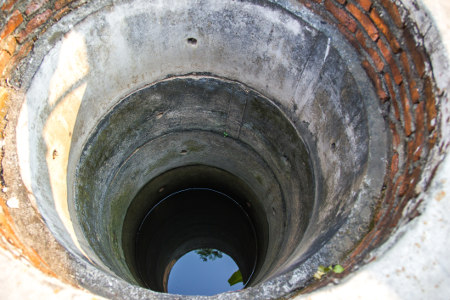
If you get reddish or red-brown stains when you use your well water, that usually means there’s excess iron in the water. This can lead to an infestation of iron bacteria, which cause bad odors and tastes, discoloration, slime deposits, and more. They also foster conditions where sulfur bacteria can grow, which leads to hydrogen sulfide production and the rotten egg smell described above.
Angel Water’s PurAclear Filters and PurAclear Chlorine Injection Systems are specially designed to eliminate both iron bacteria and the iron that helps them establish a colony in the first place. Call one of the water experts at Angel Water today to rid yourself of those unsightly stains and protect your plumbing!
For more about chlorine injection systems and iron bacteria, read this post on the subject.
Does Your Well Water Leave White Film on Your Dishes?
If you notice a white film on your dishes, faded or discolored clothes after laundry, and dry skin and hair after showering, you probably have hard water. This means your well water contains excess minerals, which interferes with nearly every household task from bathing to laundry to dishes to cleaning surfaces.
A water softener like Angel Water’s PurAwater Softener will remove excess minerals, reduce calcium deposits in your plumbing, and eliminate the itchiness and other effects of hard water. You’ll also be able to spend less on cleaning and hygiene products, since soaps and shampoos work much better with soft water.
Need Well Water Solutions? Schedule an Appointment Now!
Protect your family from contaminants in your well water. Schedule an appointment today and get expert advice on the best filtration options for your home.

